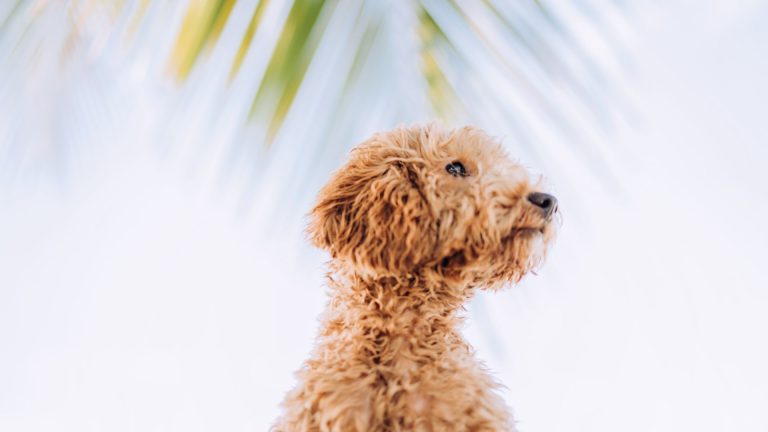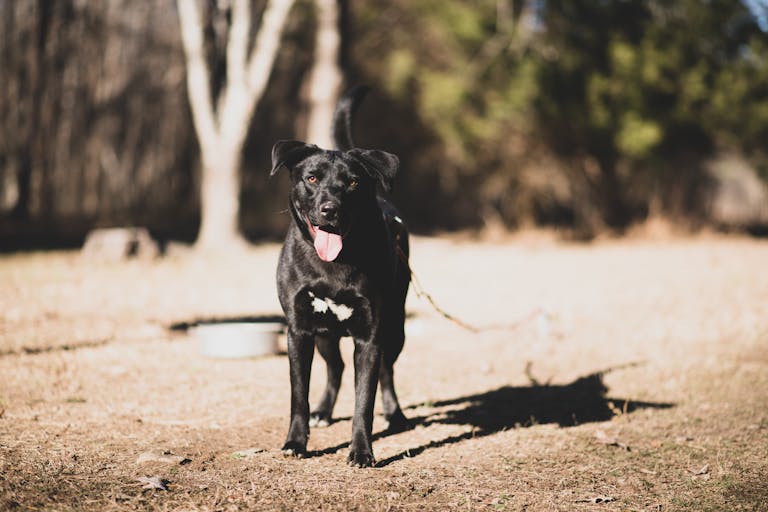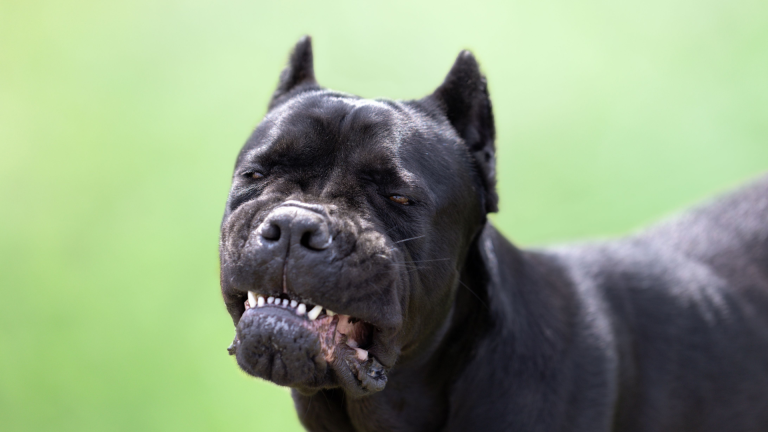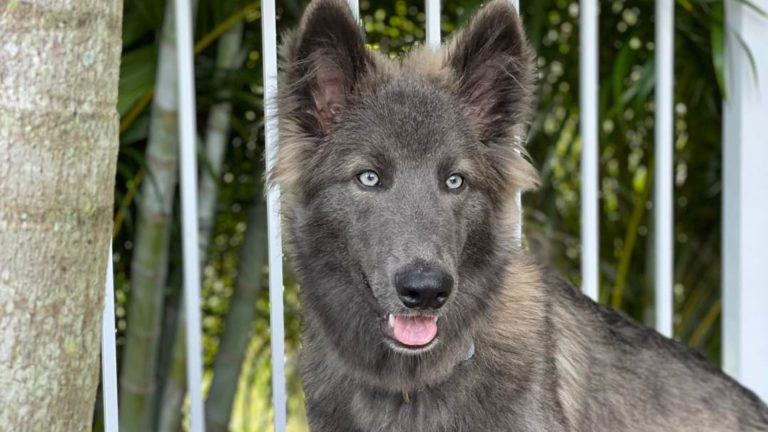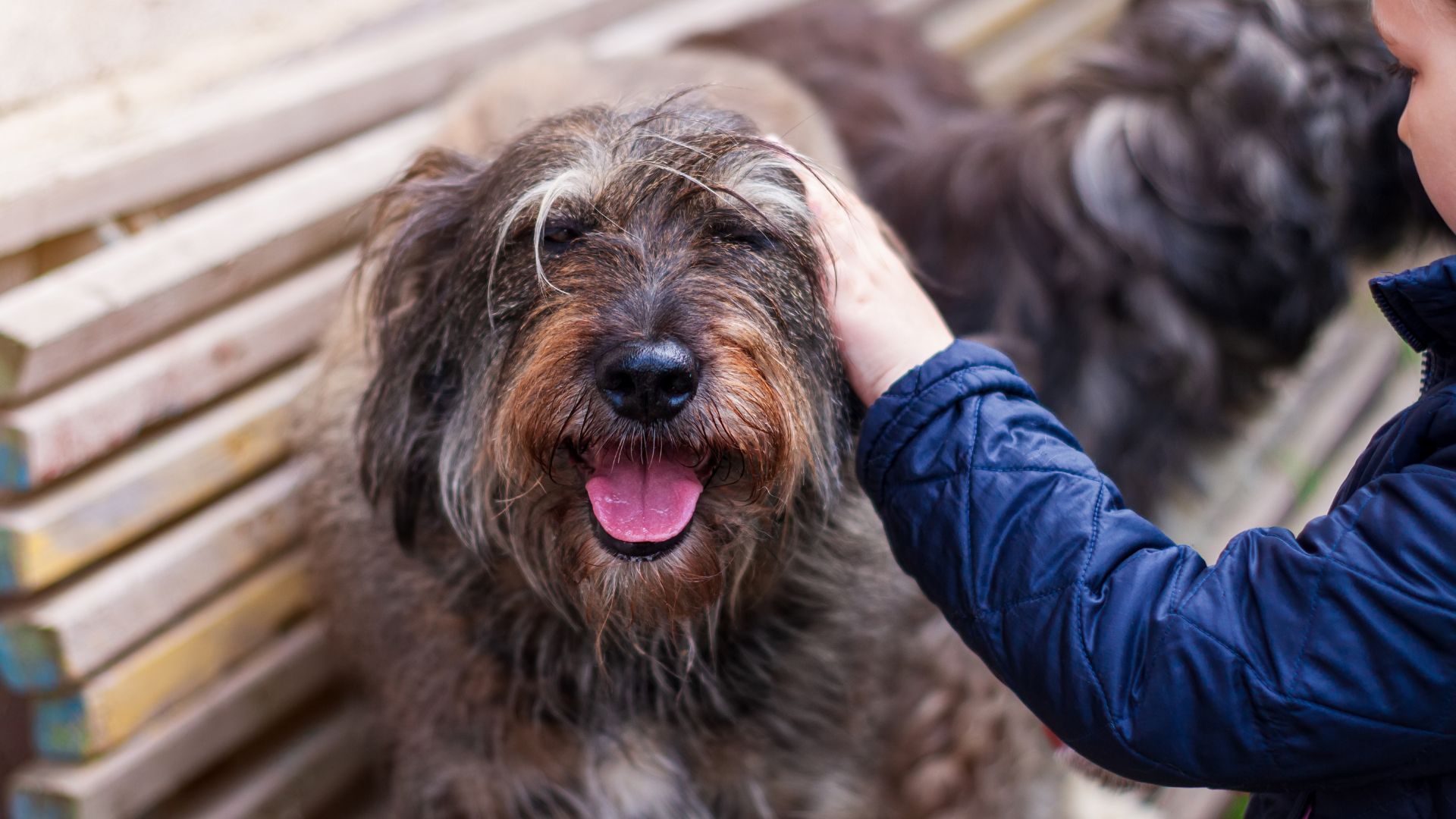
Contents
- 1 Understanding Canine Anxiety
- 2 When to Seek Professional Help
- 3 Conclusion
Dogs, like humans, can experience anxiety. This emotional state affects many breeds, causing stress and behavioral issues. Understanding anxious dog breeds is crucial for any pet owner.
Anxiety in dogs often manifests through signs like excessive barking, destructive behavior, or restlessness. Different breeds show varying levels of anxiety. Knowing these tendencies helps owners provide better care and comfort for their pets. Addressing anxiety early can prevent serious health problems and improve a dog’s quality of life.
This article will explore the top 10 anxious dog breeds. We will delve into why these breeds are prone to anxiety and offer practical tips to manage it. By the end, you’ll have a deeper understanding of canine anxiety and effective strategies to help your furry friend lead a happier, more relaxed life.

Understanding Canine Anxiety
Canine anxiety is a condition where dogs experience stress and nervousness. It can be triggered by various factors and affects dogs differently. Recognizing anxiety is vital for providing the right care.
Common signs of anxiety in dogs include excessive barking, pacing, panting, drooling, and destructive behavior. Some dogs may also display aggression, tremble, or try to escape. These behaviors indicate that the dog is uncomfortable and needs help.
Several factors can cause anxiety in dogs. Changes in the environment, such as moving to a new home or the arrival of a new family member, can be significant triggers. Loud noises like thunderstorms or fireworks often cause fear and anxiety. Separation from their owners is another common cause. Dogs are social animals, and being left alone can be very stressful for them.
Understanding these signs and causes allows pet owners to take appropriate steps to reduce their dog’s anxiety. Early intervention can prevent more serious issues and improve the dog’s overall well-being. In the next sections, we will explore specific breeds prone to anxiety and how to help them.
Top 10 Anxious Dog Breeds
Here are the top 10 anxious dog breeds known for their tendency to experience anxiety. Each breed has unique characteristics and reasons for their anxiety. Understanding these breeds helps in providing the best care and support for their emotional well-being. In the following sections, we will delve into the specific traits of each breed and offer practical tips to manage their anxiety effectively.
#1 Chihuahua
Chihuahuas are small, lively dogs with big personalities. They typically weigh between 2 to 6 pounds and have a lifespan of 12 to 20 years. Known for their alertness and energy, Chihuahuas are loyal and often bond closely with their owners. They can be either smooth or long-coated, and their expressive eyes and ears give them a distinctive look.
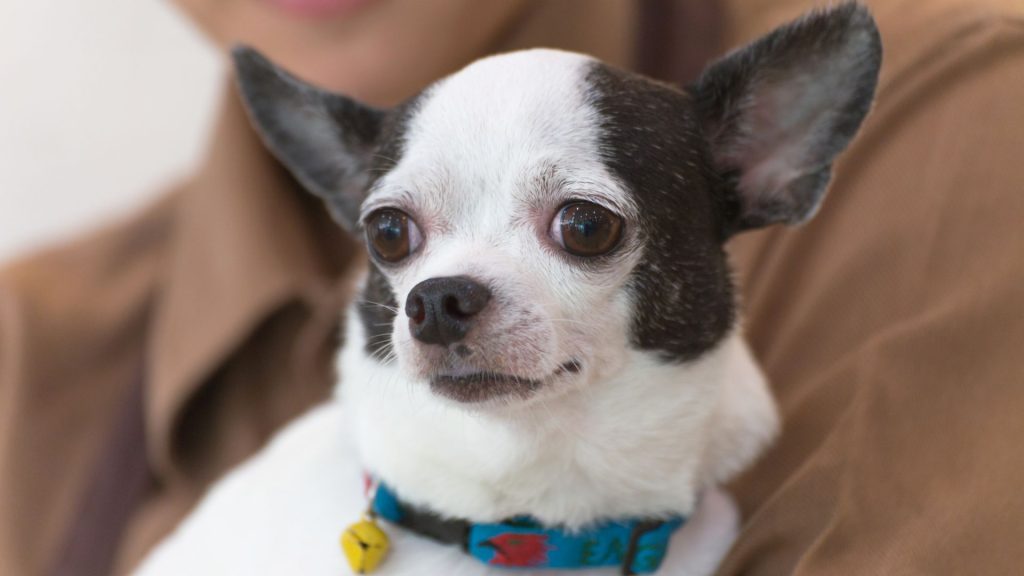
Why They Are Prone to Anxiety
Chihuahuas are prone to anxiety due to their small size and sensitive nature. They often feel threatened by larger dogs and unfamiliar environments. Their strong attachment to their owners can also lead to separation anxiety. Changes in routine, loud noises, and new experiences can easily unsettle them. Their natural wariness of strangers and unfamiliar situations can amplify their anxious behavior.
Tips to Manage Their Anxiety
- Create a Safe Space: Provide a comfortable and secure area where your Chihuahua can retreat when feeling anxious.
- Consistent Routine: Maintain a regular schedule for feeding, walking, and playtime to help them feel secure.
- Gradual Socialization: Introduce new people, pets, and environments slowly and positively to reduce fear and anxiety.
- Calming Products: Use anxiety wraps or calming sprays designed for dogs to help soothe their nerves.
- Interactive Toys: Provide toys that stimulate their mind and keep them occupied, reducing anxiety-related behaviors.
- Professional Help: If anxiety persists, consider consulting a veterinarian or a dog behaviorist for tailored advice and possible treatment options.
#2 German Shepherd
German Shepherds are large, intelligent, and versatile dogs. They typically weigh between 50 to 90 pounds and have a lifespan of 9 to 13 years. Known for their strength, loyalty, and protective nature, German Shepherds excel in various roles such as police work, search and rescue, and as service dogs. They have a double coat, which can be medium to long, and their distinctive appearance includes erect ears and a strong, muscular build.
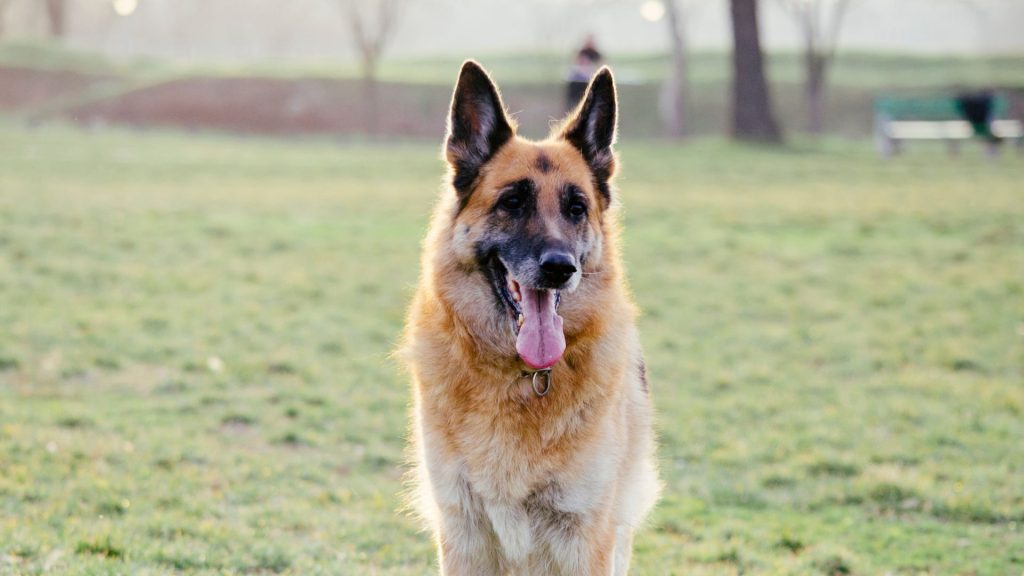
Why They Are Prone to Anxiety
German Shepherds are prone to anxiety due to their high intelligence and sensitivity. They form strong bonds with their families and can become anxious when left alone for extended periods. Their protective nature makes them hyper-aware of their surroundings, leading to anxiety in unfamiliar situations or around strangers. Lack of mental stimulation and physical exercise can also contribute to their anxiety, as they are an active and energetic breed.
Tips to Manage Their Anxiety
- Regular Exercise: Provide daily physical activities to keep them physically and mentally stimulated.
- Mental Stimulation: Engage them in interactive games, training sessions, and puzzle toys to keep their minds active.
- Consistent Routine: Establish a regular schedule for feeding, exercise, and rest to create a sense of security.
- Socialization: Expose them gradually to different people, places, and experiences to build their confidence.
- Training and Obedience: Invest in obedience training to help them understand commands and reduce anxiety in uncertain situations.
- Comfort Items: Provide toys, blankets, or items that smell like their owners to help soothe them when alone.
- Professional Assistance: If anxiety persists, seek advice from a veterinarian or a dog behaviorist for personalized strategies and potential treatments.
#3 Cocker Spaniel
Cocker Spaniels are medium-sized dogs known for their gentle and friendly nature. They typically weigh between 20 to 30 pounds and have a lifespan of 12 to 15 years. Their silky, wavy coat and expressive eyes make them particularly attractive. They are highly affectionate, enjoy being around people, and are known for their playful and energetic disposition.
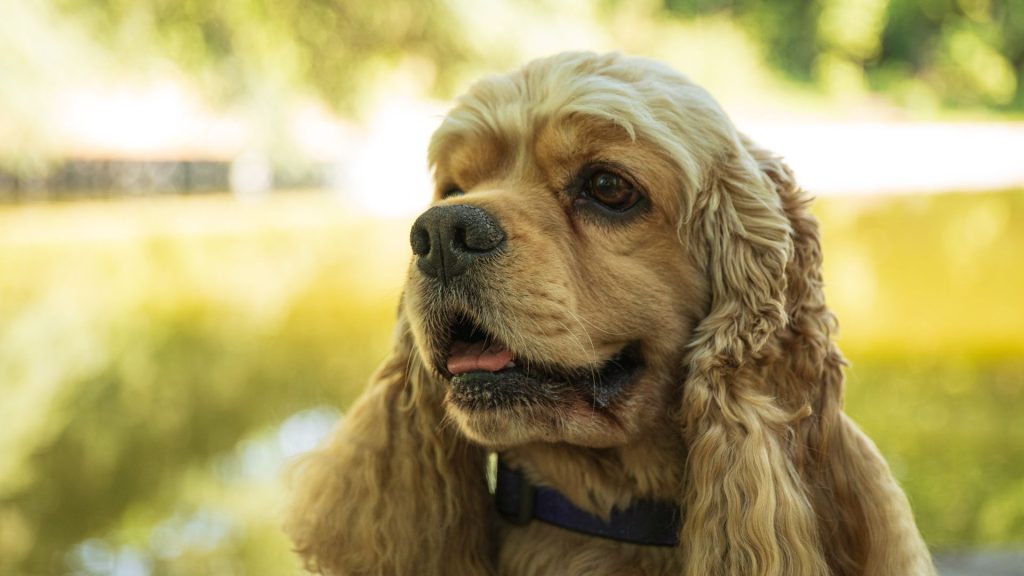
Why They Are Prone to Anxiety
Cocker Spaniels are prone to anxiety due to their highly social and sensitive nature. They thrive on human interaction and can become anxious when left alone for long periods. Their sensitivity makes them more reactive to changes in their environment, loud noises, or unfamiliar people. Additionally, their strong desire to please their owners can lead to stress if they sense disapproval or tension.
Tips to Manage Their Anxiety
- Adequate Exercise: Ensure they get regular physical activity to burn off excess energy and reduce stress.
- Mental Enrichment: Provide puzzle toys and engage in training sessions to keep their minds active and engaged.
- Positive Reinforcement: Use positive reinforcement techniques to build their confidence and reduce anxiety.
- Consistent Routine: Maintain a stable daily routine for feeding, exercise, and playtime to create a sense of security.
- Socialization: Gradually expose them to new environments, people, and other animals to help them adapt and reduce fear.
- Comforting Environment: Create a calm and secure space with their favorite toys and blankets to help them feel safe.
- Professional Support: If anxiety issues persist, consult a veterinarian or a dog behaviorist for tailored advice and potential treatment options.
#4 Bichon Frise
Bichon Frises are small, charming dogs known for their cheerful and affectionate nature. They typically weigh between 10 to 20 pounds and have a lifespan of 12 to 15 years. Their fluffy, curly white coat and dark, expressive eyes give them a distinctive and adorable appearance. Bichon Frises are playful, friendly, and get along well with children and other pets, making them excellent family companions.
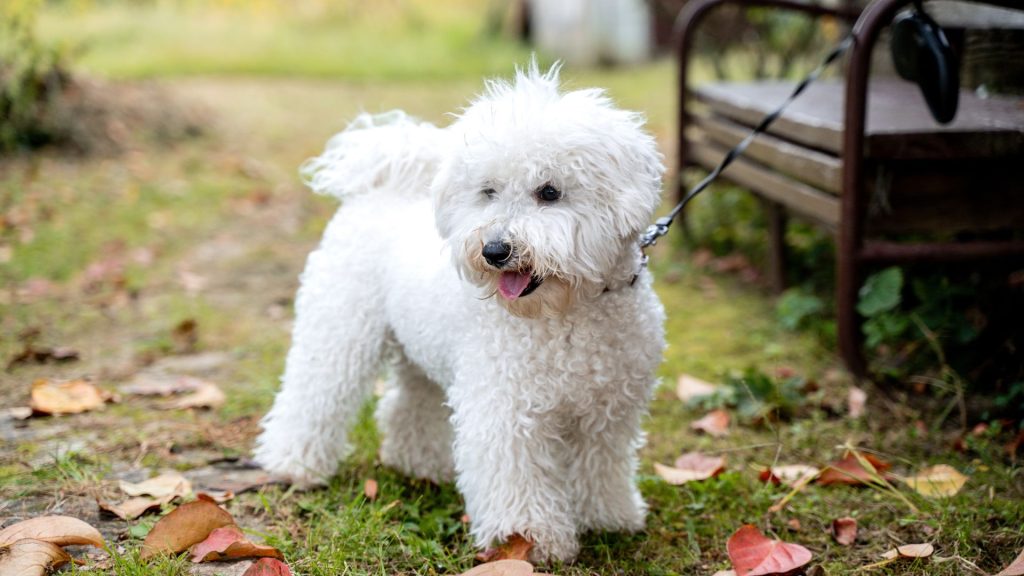
Why They Are Prone to Anxiety
Bichon Frises are prone to anxiety because of their strong attachment to their owners and their need for social interaction. They do not like being left alone and can develop separation anxiety. Their sensitivity makes them more reactive to changes in their environment or routine. Additionally, their desire for companionship means they can become anxious if they feel neglected or isolated.
Tips to Manage Their Anxiety
- Social Interaction: Spend quality time with your Bichon Frise, engaging in play and affection to meet their social needs.
- Routine and Consistency: Establish a regular schedule for feeding, exercise, and playtime to provide stability and security.
- Gradual Alone Time: Gradually accustom them to being alone for short periods, increasing the duration over time to reduce separation anxiety.
- Comfort Items: Provide toys, blankets, or items with your scent to comfort them when you’re not around.
- Mental Stimulation: Keep their minds active with interactive toys, training sessions, and games to prevent boredom-related anxiety.
- Safe Space: Create a designated area where they can retreat when feeling anxious, with familiar and comforting items.
- Professional Guidance: If anxiety persists, seek help from a veterinarian or dog behaviorist to explore further strategies and potential treatments.
#5 Border Collie
Border Collies are medium-sized dogs known for their intelligence, agility, and work ethic. They typically weigh between 30 to 45 pounds and have a lifespan of 12 to 15 years. With their keen eyes and strong herding instinct, Border Collies excel in activities that require agility and precision. They have a double coat, which can be smooth or rough, and come in various colors and patterns. These dogs are highly energetic and require ample mental and physical stimulation.
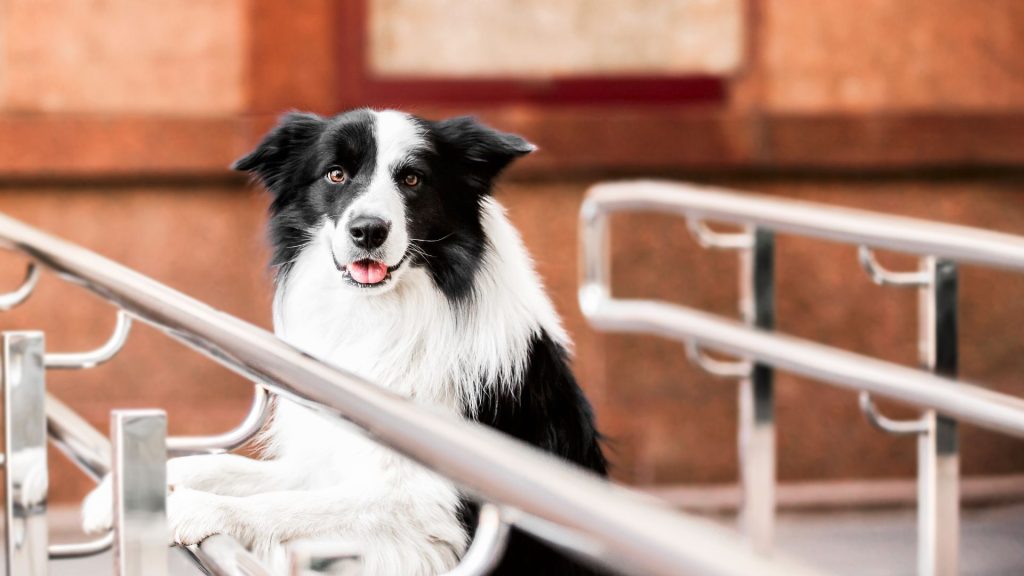
Why They Are Prone to Anxiety
Border Collies are prone to anxiety primarily due to their high intelligence and energy levels. They need constant mental and physical activity to stay happy. When they don’t get enough stimulation, they can become bored and anxious. Their sensitivity to their environment and strong attachment to their owners can also contribute to anxiety, especially in unfamiliar situations or when left alone for long periods. Additionally, their instinct to herd can make them overly alert and reactive.
Tips to Manage Their Anxiety
- Regular Exercise: Provide daily vigorous exercise to help them burn off excess energy and reduce stress.
- Mental Challenges: Engage them in activities that stimulate their mind, such as puzzle toys, obedience training, and agility courses.
- Consistent Routine: Maintain a stable daily routine to give them a sense of predictability and security.
- Socialization: Expose them gradually to different people, animals, and environments to help them adapt and reduce fear.
- Positive Reinforcement: Use positive reinforcement techniques to build their confidence and reduce anxiety.
- Job or Task: Give them a job or task to do, such as fetching items or participating in agility exercises, to keep them occupied and satisfied.
- Professional Help: If anxiety issues persist, consult a veterinarian or a dog behaviorist for tailored advice and potential treatment options.
#6 Jack Russell Terrier
Jack Russell Terriers are small, energetic dogs known for their lively and fearless nature. They typically weigh between 13 to 17 pounds and have a lifespan of 13 to 16 years. These terriers are highly intelligent and have a strong hunting instinct. They have a short, dense coat that can be smooth, rough, or broken, and their expressive eyes and perky ears add to their spirited appearance. Jack Russells are known for their boundless energy and need for constant activity and mental stimulation.
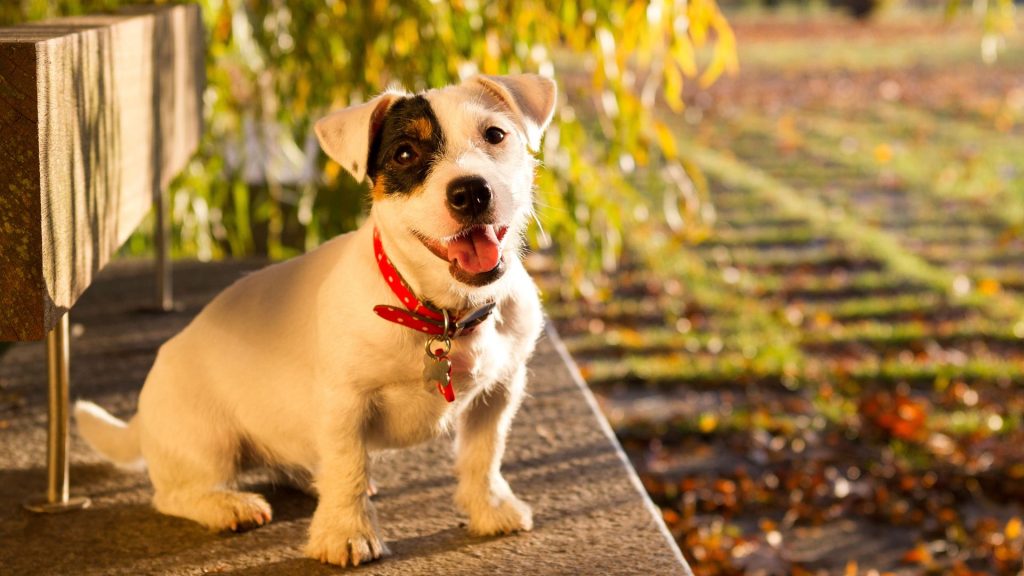
Why They Are Prone to Anxiety
Jack Russell Terriers are prone to anxiety due to their high energy levels and intelligence. They need regular physical and mental stimulation to stay happy. When they don’t get enough exercise or activities to keep their minds engaged, they can become bored and anxious. Their strong attachment to their owners can also lead to separation anxiety. Additionally, their natural curiosity and alertness can make them more sensitive to changes in their environment or routine.
Tips to Manage Their Anxiety
- Regular Exercise: Ensure they get daily vigorous exercise to burn off excess energy and reduce stress.
- Mental Stimulation: Provide puzzle toys, training sessions, and interactive games to keep their minds active and engaged.
- Consistent Routine: Maintain a stable daily schedule for feeding, exercise, and playtime to provide a sense of security.
- Gradual Alone Time: Accustom them to being alone for short periods, gradually increasing the duration to reduce separation anxiety.
- Socialization: Expose them to different people, animals, and environments gradually to help them adapt and reduce fear.
- Positive Reinforcement: Use positive reinforcement techniques to build their confidence and reduce anxiety.
- Professional Guidance: If anxiety issues persist, consult a veterinarian or a dog behaviorist for tailored advice and potential treatment options.
#7 Labrador Retriever
Labrador Retrievers are medium to large-sized dogs known for their friendly and outgoing nature. They typically weigh between 55 to 80 pounds and have a lifespan of 10 to 12 years. Labradors are highly social, intelligent, and eager to please, making them excellent family pets and service dogs. They have a short, dense coat that is water-resistant, and they come in three primary colors: black, yellow, and chocolate. Their playful demeanor and affectionate personality make them one of the most popular dog breeds worldwide.
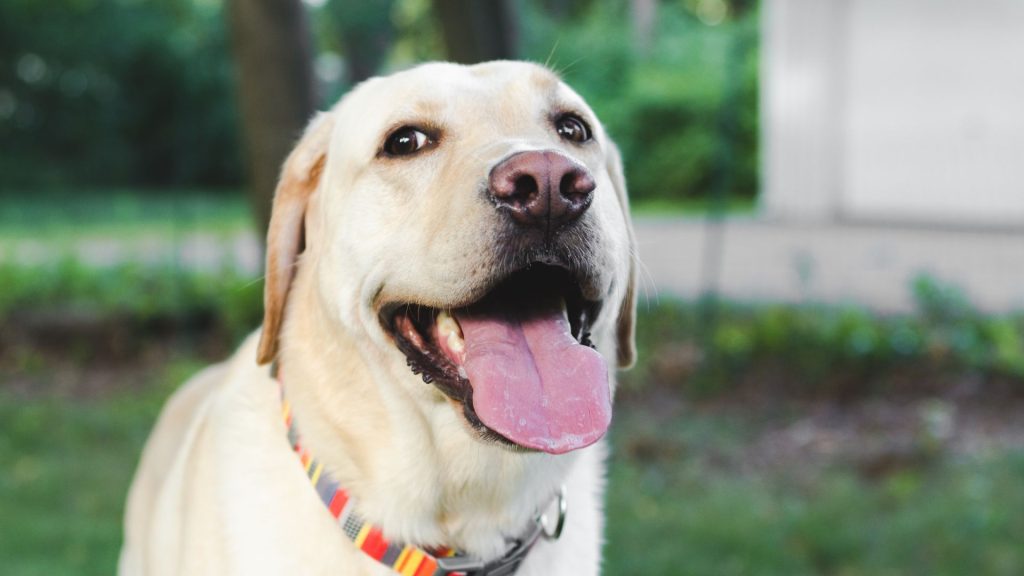
Why They Are Prone to Anxiety
Labrador Retrievers are prone to anxiety due to their strong attachment to their owners and their need for social interaction. They thrive on companionship and can become anxious when left alone for long periods, leading to separation anxiety. Labradors are also highly energetic and require regular physical and mental stimulation. A lack of exercise or mental engagement can result in boredom and anxiety. Additionally, their sensitivity to their environment can make them more reactive to changes or loud noises.
Tips to Manage Their Anxiety
- Regular Exercise: Provide daily exercise to help them burn off excess energy and reduce stress.
- Mental Stimulation: Engage them in activities that challenge their minds, such as puzzle toys, training sessions, and interactive games.
- Consistent Routine: Establish a stable daily routine for feeding, exercise, and playtime to create a sense of security.
- Social Interaction: Ensure they have plenty of social interaction with family members and other pets to meet their social needs.
- Gradual Alone Time: Gradually accustom them to being alone for short periods, increasing the duration over time to reduce separation anxiety.
- Positive Reinforcement: Use positive reinforcement techniques to build their confidence and reduce anxiety.
- Comforting Environment: Create a calm and secure space with their favorite toys and blankets to help them feel safe when alone.
- Professional Help: If anxiety persists, seek advice from a veterinarian or a dog behaviorist for tailored strategies and potential treatment options.
#8 Vizsla
Vizslas are medium-sized dogs known for their athleticism, loyalty, and affectionate nature. They typically weigh between 45 to 65 pounds and have a lifespan of 10 to 14 years. Vizslas have a sleek, short coat that is golden-rust in color. They are highly energetic, intelligent, and require a lot of physical activity. Known as “Velcro dogs,” Vizslas form strong bonds with their owners and thrive on human companionship. They are excellent hunting and sporting dogs, excelling in activities that require agility and endurance.
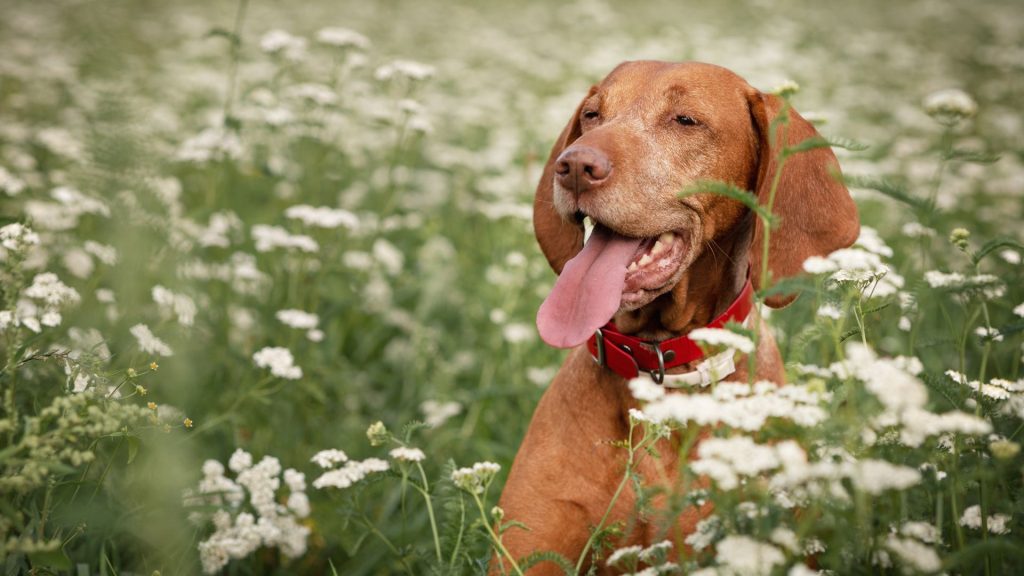
Why They Are Prone to Anxiety
Vizslas are prone to anxiety due to their strong attachment to their owners and their high energy levels. They do not do well when left alone for long periods, which can lead to separation anxiety. Their need for constant physical and mental stimulation means that a lack of exercise or activities can result in boredom and anxiety. Additionally, their sensitivity to their surroundings can make them more reactive to changes in their environment or routine, loud noises, and unfamiliar situations.
Tips to Manage Their Anxiety
- Daily Exercise: Provide ample exercise every day to help them burn off excess energy and reduce stress.
- Mental Engagement: Keep their minds active with puzzle toys, training sessions, and interactive games to prevent boredom.
- Consistent Routine: Establish a regular daily schedule for feeding, exercise, and playtime to provide stability and security.
- Social Interaction: Ensure they have plenty of social interaction with family members and other pets to meet their social needs.
- Gradual Alone Time: Accustom them gradually to being alone for short periods, increasing the duration over time to reduce separation anxiety.
- Positive Reinforcement: Use positive reinforcement techniques to build their confidence and reduce anxiety.
- Safe Space: Create a calm and secure space with their favorite toys and blankets where they can retreat when feeling anxious.
- Professional Help: If anxiety issues persist, consult a veterinarian or a dog behaviorist for tailored advice and potential treatment options.
#9 Shih Tzu
Shih Tzus are small, affectionate dogs known for their friendly and outgoing nature. They typically weigh between 9 to 16 pounds and have a lifespan of 10 to 16 years. Shih Tzus have a luxurious, long, and flowing coat that requires regular grooming. Their expressive eyes and distinctive pushed-in face give them a charming and unique appearance. These dogs are known for their playful and sociable personality, making them excellent companions.
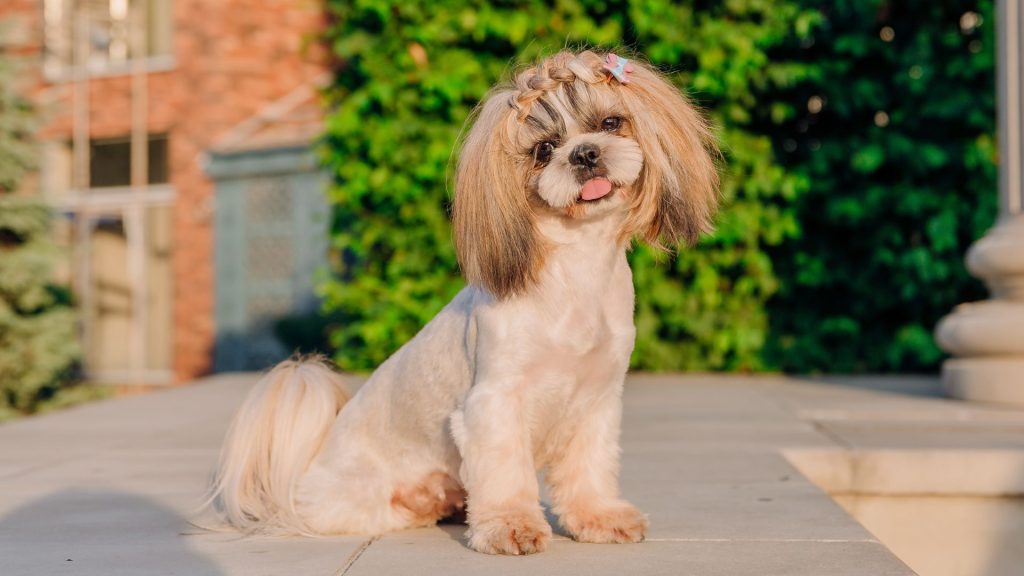
Why They Are Prone to Anxiety
Shih Tzus are prone to anxiety due to their strong attachment to their owners and their need for companionship. They do not like being left alone for extended periods, which can lead to separation anxiety. Their small size and sensitivity can make them more reactive to changes in their environment, loud noises, and unfamiliar situations. Additionally, their strong desire for human interaction means they can become anxious if they feel neglected or isolated.
Tips to Manage Their Anxiety
- Quality Time: Spend ample quality time with your Shih Tzu, engaging in play, affection, and social activities to meet their social needs.
- Routine and Consistency: Maintain a stable daily routine for feeding, exercise, and grooming to provide a sense of security.
- Gradual Alone Time: Gradually accustom them to being alone for short periods, increasing the duration over time to reduce separation anxiety.
- Comfort Items: Provide toys, blankets, or items with your scent to comfort them when you’re not around.
- Mental Stimulation: Keep their minds active with puzzle toys, training sessions, and interactive games to prevent boredom-related anxiety.
- Calm Environment: Create a calm and secure space where they can retreat when feeling anxious, with familiar and comforting items.
- Positive Reinforcement: Use positive reinforcement techniques to build their confidence and reduce anxiety.
- Professional Guidance: If anxiety persists, seek help from a veterinarian or a dog behaviorist for tailored advice and potential treatment options.
#10 Italian Greyhound
Italian Greyhounds are small, elegant dogs known for their slender build and graceful movement. They typically weigh between 7 to 14 pounds and have a lifespan of 12 to 15 years. Their short, smooth coat comes in various colors, including black, blue, fawn, and white. Italian Greyhounds are affectionate, intelligent, and playful, making them excellent companions. They are also known for their speed and agility, enjoying activities that allow them to run and explore.

Why They Are Prone to Anxiety
Italian Greyhounds are prone to anxiety due to their sensitive and affectionate nature. They form strong bonds with their owners and can become anxious when left alone for extended periods, leading to separation anxiety. Their sensitivity to their environment means they can be easily startled by loud noises, sudden movements, or changes in routine. Additionally, their delicate build can make them more prone to physical discomfort, which can contribute to anxiety.
Tips to Manage Their Anxiety
- Regular Exercise: Provide daily opportunities for exercise, such as walks and playtime, to help them burn off energy and reduce stress.
- Mental Stimulation: Engage them with puzzle toys, training sessions, and interactive games to keep their minds active and prevent boredom.
- Consistent Routine: Establish a regular schedule for feeding, exercise, and rest to create a sense of stability and security.
- Gradual Alone Time: Gradually accustom them to being alone for short periods, increasing the duration over time to reduce separation anxiety.
- Comfort Items: Provide their favorite toys, blankets, or items with your scent to comfort them when you’re not around.
- Calm Environment: Create a quiet, secure space where they can retreat when feeling anxious, with familiar and soothing items.
- Positive Reinforcement: Use positive reinforcement techniques to build their confidence and reduce anxiety.
- Professional Help: If anxiety persists, consult a veterinarian or a dog behaviorist for tailored advice and potential treatment options.
General Tips to Help Anxious Dogs
Helping an anxious dog involves several strategies to create a calm and secure environment. Here are some general tips to manage and reduce anxiety in dogs:
Creating a Calm Environment
A calm environment is crucial for anxious dogs. Designate a quiet area in your home where your dog can retreat when feeling stressed. This space should include their favorite toys, blankets, and comforting items that smell like you. Reducing loud noises and sudden movements in this area can also help create a sense of security.
Consistent Routine and Training
Maintaining a consistent daily routine for feeding, walking, and playtime provides stability and predictability for your dog. Regular training sessions using positive reinforcement techniques can build their confidence and reduce anxiety. Consistent commands and expectations help them understand what is expected, which can alleviate stress.
Use of Calming Products
Calming products such as anxiety wraps, calming sprays, and pheromone diffusers can be effective in reducing anxiety. Anxiety wraps apply gentle pressure, similar to swaddling a baby, which can be soothing. Calming sprays and diffusers release scents that mimic natural calming pheromones, creating a relaxing atmosphere for your dog.
Importance of Regular Exercise and Mental Stimulation
Regular physical exercise is essential for reducing stress and anxiety in dogs. Daily walks, playtime, and opportunities to run and explore help burn off excess energy and reduce tension. Mental stimulation through puzzle toys, training exercises, and interactive games keeps their minds engaged and prevents boredom-related anxiety.
By implementing these strategies, you can help your anxious dog feel more relaxed and secure, improving their overall well-being.

When to Seek Professional Help
If your dog’s anxiety persists despite your efforts, it’s time to seek professional help. Signs that indicate a need for expert intervention include destructive behavior, excessive barking, aggression, and self-harm like excessive licking or chewing. If your dog shows these symptoms regularly, consult a professional.
Types of Professionals to Consult
There are several professionals who can help manage your dog’s anxiety. A veterinarian can rule out medical causes and may prescribe medication. A dog behaviorist specializes in understanding and modifying problematic behaviors. A professional dog trainer can assist with obedience and behavior modification techniques.
What to Expect from Professional Treatment
Professional treatment often begins with a thorough assessment of your dog’s behavior and environment. Based on the findings, a customized plan is developed, which may include behavior modification techniques, training exercises, and, in some cases, medication. Regular follow-ups ensure the plan’s effectiveness and make necessary adjustments.
Seeking professional help can significantly improve your dog’s quality of life, helping them lead a happier and less anxious existence.
Conclusion
Understanding and managing dog anxiety is crucial for their well-being. Recognizing the signs and causes of anxiety helps in providing the right care. For anxious dog breeds, early intervention and consistent management are key. If your efforts don’t alleviate your dog’s anxiety, don’t hesitate to seek professional help.
Professionals can offer tailored solutions to improve your dog’s quality of life. Caring for an anxious dog requires patience and dedication, but the rewards of seeing your pet happy and relaxed are worth it. Remember, a calm and confident dog is a happier companion.

Hello, I’m Donna Carter, the founder and writer behind PetFleck.com. My journey with dogs started years ago, and it’s been a passion that has only grown stronger over time. I’ve always been fascinated by the unique behaviors and characteristics of different dog breeds, and this curiosity has led me to dive deep into the world of canine studies.
My love for dogs is the driving force behind everything I do. I’ve dedicated countless hours to researching and understanding the nuances of dog care, training, and breed-specific traits. This dedication helps me create content that is not only informative but also genuinely helpful for fellow dog lovers and owners.
At PetFleck, I combine my extensive knowledge and hands-on experience with my passion for dogs to provide valuable insights and tips. Whether it’s exploring different breeds or offering practical advice on dog care, I aim to share knowledge that makes a real difference in the lives of dogs and their families.
I’m thrilled to share my love for dogs with you through my writing. I hope my articles inspire and inform, helping you to better understand and appreciate the incredible bond we share with our furry friends.
Thank you for visiting PetFleck.com, and I look forward to connecting with you through our shared love of dogs!

